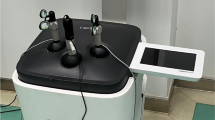Abstract
Background: The development of computerized surgical simulators in a virtual reality environment demands models for proper validation. Recent investigations have shown that a virtual reality simulator (MIST-VR) is a reliable tool for the assessment of laparoscopic psychomotor skills and that it improves the automation of the so-called fulcrum effect. Therefore, we set out to determine whether training with the MIST-VR would improve the surgical performance of surgically inexperienced medical students and to see if results obtained in the simulator would correlate with surgical performance. Methods: A total of 29 medical students were randomized into two groups. One group received preoperative MIST-VR training. Both groups then performed a simulated laparoscopic appendectomy in a pig. The operations were videotaped and examined by three independent observers. Results: There was no significant difference in performance between the two groups. The performance with the MIST-VR correlated with the results in surgery. Conclusion: A method that can measure surgical skill, based on the scoring of independent observers who view videotaped performances, seems to be reliable. MIST-VR did not improve the surgical skills of the subjects, but the results with MIST-VR did predict surgical outcome.
Similar content being viewed by others
Author information
Authors and Affiliations
Rights and permissions
About this article
Cite this article
Ahlberg, G., Heikkinen, T., Iselius, L. et al. Does training in a virtual reality simulator improve surgical performance?. Surg Endosc 16, 126–129 (2002). https://doi.org/10.1007/s00464-001-9025-6
Received:
Accepted:
Published:
Issue Date:
DOI: https://doi.org/10.1007/s00464-001-9025-6




